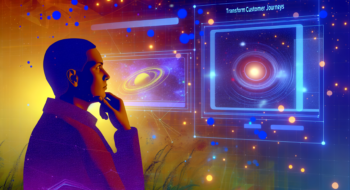“`html
Speed Up Production with AI Motion Graphics Templates for After Effects
In today’s fast-paced digital landscape, creating high-quality video content is more important than ever. Speed up production and enhance your projects with AI motion graphics templates for After Effects. These innovative templates allow video editors to download and implement dynamic visuals effortlessly. With just a few clicks, you can customize animations, transitions, and effects, achieving a professional finish without the lengthy editing process. By utilizing AI motion graphics templates for After Effects, you not only save time but also elevate your brand’s aesthetics, delivering polished results at record speed. Dive into the future of video editing today!
Why AI Motion Graphics Templates Are a Game-Changer
Traditional motion design requires hours of manual tweaking—keyframing, layer adjustments, and render times. AI-powered templates flip this script by automating repetitive tasks while maintaining creative control. Here’s how they transform workflows:
- Lightning-Fast Customization: Pre-built templates with dynamic placeholders let you swap text, colors, and assets in seconds. For example, Jitter’s UI templates offer fully editable components like animated search bars and toggle switches, eliminating the need to build from scratch.
- Consistent Quality: Templates enforce design standards, ensuring your animations align with brand guidelines. Platforms like Envato Elements provide 110,000+ video templates, each optimized for seamless integration.
- Scalability: Need to animate multiple elements? Templates like .mogrt files automatically adjust to text length, letting you scale animations without recalculating keyframes.
How AI Templates Work: Behind the Scenes
Modern AI tools don’t just automate—they anticipate needs. Take AI Relight, which analyzes footage to add 3D lighting effects. This approach mirrors how motion templates leverage AI to:
- Precompute Complex Animations: Templates with baked-in physics (e.g., liquid bounces, particle systems) eliminate manual keyframing. YouTube tutorials demonstrate how to achieve smooth liquid text animations using speed graphs and motion blur—techniques now pre-packaged in AI templates.
- Adapt to Content: Using expressions like sourceRectAtTime, templates auto-resize backgrounds or animate lines to match text length, as seen in dynamic text animation projects.
- Generate Visual Concepts: Tools like text-to-image AI create storyboard visuals from prompts, reducing pre-production time. Imagine describing a “cyberpunk UI” and getting instant concept art to guide your After Effects work.
Customization Made Simple: Tailoring Templates
True power lies in tailoring templates to your vision. Here’s how to maximize their potential:
Step 1: Selecting the Right Template
Choose templates that align with your project’s style. For instance:
- UI/UX Animations: Jitter’s toggle switches and progress bars are ideal for app demos or digital interfaces.
- Branding Assets: Envato’s logo animations and social media templates help maintain brand consistency across campaigns.
- Advanced Effects: AI Relight enables 3D lighting that enhances product demos or cinematic scenes.
Step 2: Editing and Enhancing
Templates are starting points, not limitations. Editors often:
- Adjust Timing: Modify speed graphs to change animation pacing, as shown in liquid text tutorials.
- Add Layers: Combine multiple templates (e.g., a Jitter search bar with an Envato logo animation) for complex scenes.
- Apply Presets: Use pre-made color gradients or particle effects to unify disparate elements.
Advanced Tools: Pushing Creative Boundaries
For projects requiring cutting-edge visuals, pair templates with AI-powered tools:
1. AI-Driven Lighting and Shading
Tools like AI Relight analyze footage depth maps to add realistic 3D lighting. This transforms flat templates into immersive environments, perfect for product showcases or fantasy scenes.
2. Generative Art Integration
Combine AI-generated images (via text-to-image tools) with motion templates. For example, generate a retro-futuristic cityscape, then animate it using Jitter’s sliding web screens.
3. Dynamic Text Animations
For text-heavy projects, create .mogrt templates that auto-scale backgrounds and animate underlines based on text length. This ensures consistency across long scripts or multilingual content.
Top Resources for AI Motion Graphics Templates
Where to find these time-saving assets:
- Jitter: Free UI and motion templates like animated search bars and progress donuts.
- Envato Elements: Massive library of editable templates, including mobile app mockups and logo animations.
- Adobe Exchange: Official marketplace for After Effects tools, including AI-enhanced plugins.
- YouTube Tutorials: Channels like Avnish Parker offer free guides for creating liquid text and bounce animations.
Future of AI in Motion Graphics
As AI evolves, expect:
- Real-Time Rendering: Tools that adjust animations in seconds, not minutes.
- Multi-Asset Coordination: Templates that auto-sync animations across video, audio, and graphics.
- Personalized Workflows: AI learning your editing style to suggest template modifications.
Ready to revolutionize your workflow? Visit Neyrotex.com for curated AI motion graphics templates and tutorials.
Stay ahead of the curve—subscribe to our Telegram channel for daily updates on AI tools, tutorials, and industry trends.
“`







